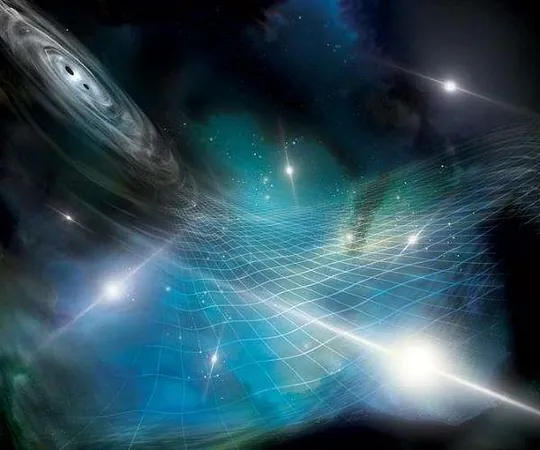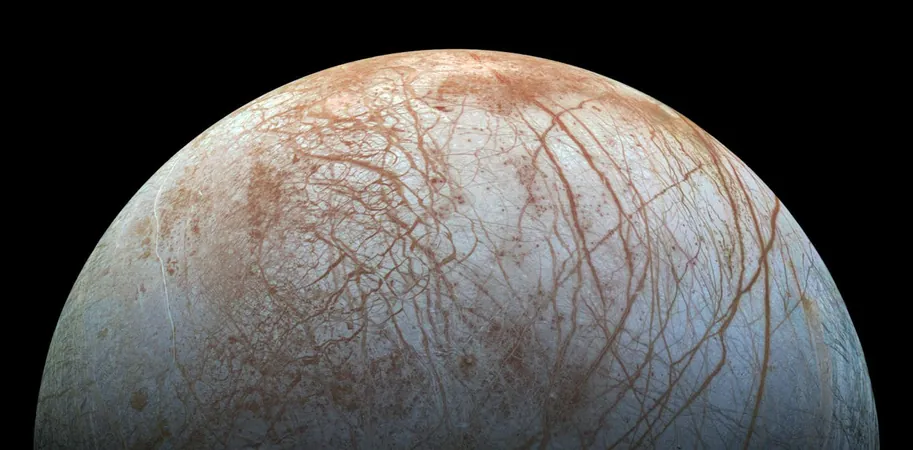
Astrophysicist Unveils Groundbreaking Method to Detect Cosmic Gravitational Waves
2025-05-13
Author: Emily
A Revolutionary Quest for Gravitational Waves
In a daring venture, Jeremy Darling, an astrophysicist at the University of Colorado Boulder, is pioneering an innovative method to measure the universe's gravitational wave background. These elusive waves, which ripple through the cosmos, warp the very fabric of space and time, holding the key to unraveling profound cosmic mysteries.
Unlocking the Universe's Secrets
Published in The Astrophysical Journal Letters, Darling's research may pave the way for understanding gravity at its most fundamental level. "There’s so much to learn from precise measurements of gravitational waves," he stated. Different manifestations of gravity could lead to diverse types of gravitational waves, each with a unique telltale signature.
Visualizing Gravitational Waves: The Cosmic Ocean
To grasp gravitational waves, imagine Earth as a small buoy bobbing amidst a tumultuous cosmic ocean. Throughout the ages, supermassive black holes have engaged in a high-stakes dance, spiraling around one another until they collide, generating immense gravitational ripples that broadcast across the universe.
Tracking the Cosmic Wave Pool
While the universe is constantly flooded with these gravitational waves, detecting them remains a significant challenge. Darling aims to explore how they shift and sway not just in a linear path but also side to side, enriching our understanding of these cosmic fluctuations.
Quasars: The Search for Signals
Building on prior success from the NANOGrav collaboration, which measured the gravitational wave background's effect on distant pulsars, Darling is turning to quasars—supermassive black holes at galactic cores. By precisely monitoring the movements of these stellar giants against one another, he hopes to uncover hidden gravitational wave signals.
The Intricacies of Astrometry
This ambitious study delves into the complex realm of astrometry, examining how distant quasars, located millions of light-years away, appear to move due to gravitational wave interactions. Darling compares this to observing a curveball's trajectory—light's path is bent by these cosmic forces.
Precision Science: A Herculean Task
Detecting these subtle movements is daunting, necessitating a precision ten times greater than spotting a fingernail growing on the moon. Compounding the difficulty is Earth's own rapid motion through space, both around the sun and through the galaxy. Darling's innovative method involves utilizing data from the European Space Agency's Gaia satellite, which has monitored over a million quasars since its launch.
The Future: A Data Goldmine on the Horizon
While his current findings are preliminary, the potential for future breakthroughs is immense. The Gaia team plans to release over five years of additional quasar observations in 2026, offering a wealth of data that could finally enable the detection of gravitational waves.
Darling remains optimistic: "If we can analyze millions of quasars, we might uncover the buried signals within this vast dataset, bringing us closer to unlocking the mysteries of the universe's gravitational wave background."









 Brasil (PT)
Brasil (PT)
 Canada (EN)
Canada (EN)
 Chile (ES)
Chile (ES)
 Česko (CS)
Česko (CS)
 대한민국 (KO)
대한민국 (KO)
 España (ES)
España (ES)
 France (FR)
France (FR)
 Hong Kong (EN)
Hong Kong (EN)
 Italia (IT)
Italia (IT)
 日本 (JA)
日本 (JA)
 Magyarország (HU)
Magyarország (HU)
 Norge (NO)
Norge (NO)
 Polska (PL)
Polska (PL)
 Schweiz (DE)
Schweiz (DE)
 Singapore (EN)
Singapore (EN)
 Sverige (SV)
Sverige (SV)
 Suomi (FI)
Suomi (FI)
 Türkiye (TR)
Türkiye (TR)
 الإمارات العربية المتحدة (AR)
الإمارات العربية المتحدة (AR)